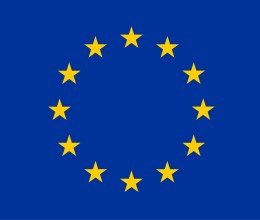
Europe continues to dominate the global climate funds universe, housing almost 80 percent of the global assets and 563 out of the 860 funds that we have identified globally, as of December 2021. Growth has accelerated over the past couple of years, fuelled by increased investor demand and regulation.
These are the findings of Morningstar’s yearly report ‘Investing in Times of Climate Change’. The firm also found the years 2020 and 2021 were pivotal for sustainable investing in Europe with the rollout of two ground-breaking classification and disclosure regulatory frameworks as part of the European Union’s Action Plan for Financing Sustainable Growth: the EU Taxonoand the Sustainable Finance Disclosure Regulation .
Both initiatives have had a ripple effect across multiple areas, including climate investing. The EU Action Plan for Financing Sustainable Growth agreed in 2018 laid the groundwork for a number of political agreements, which aim to define sustainable activities, create rules and increase disclosure related to sustainability products and sustainable investments, and provide climate benchmarks.
This includes introducing amendments to existing regulatory frameworks (e.g. the Markets in Financial Instruments Directive (MiFID II), undertakings for the collective investment in transferable securities (UCITS), the Alternative Investment Fund Managers Directive (AIFMD), Solvency II) as well as introducing new regulations affecting the asset management industry, such as the SFDR, the EU Taxonomy Regulation, and Benchmark Regulations for EU climate benchmarks and ESG disclosures.
The EU Taxonomy, agreed by the EU in 2019, is a classification system defining environmentally sustainable economic activities. It establishes six environmental objectives:
1. climate change mitigation;
2. climate change adaptation;
3. sustainable use and protection of water and marine resources;
4. transition to a circular economy; 5. pollution prevention and control; and 6. protection and restoration of biodiversity and ecosystems.
5 The Sustainable Finance Disclosure Regulation, which came into effect on 10 March 2021, aims to trigger changes in behavioral patterns in the financial sector, discouraging greenwashing and promoting responsible and sustainable investments. It requires that asset-management companies provide information about their investments' ESG risks as well as their impact on society and the planet.
Assets in European climate funds expanded over fivefold in the past two years. In 2021 alone, European climate funds almost doubled to $325 billion. The most significant growth was observed among Climate Conscious and Low Carbon funds: Assets in the former rose by 164 percent and the latter by 116 percent, and Climate Conscious became the largest category, housing 31 percent of European climate fund assets ahead of Climate Solutions (27 percent)..
The accelerated asset growth can be mainly explained by the increased inflows of money poured into these funds, especially Climate Solutions and Climate Conscious funds.
In the first quarter, fund flows into this universe reached a high of $42 billion, with January being a record-breaking month, hitting almost $18 billion on high valuation for renewable energy stocks. Flows into climate funds slid thereafter amid a general fund market slowdown after the first quarter. Over the full year, flows into the European climate fund universe still amounted to a record high of over $108 billion, up 61 percent compared with 2020. Along with the strong inflows, the number of funds available to European climate-focused investors saw significant growth, with the launch of 151 new climate funds last year.
Climate Conscious strategies represented almost half of the new launches (73 funds), including L&G ESG Paris Aligned World Equity Index Fund ($945 million) and Aviva Investors - Climate Transition Global Credit Fund ( $561 million). The former tracks a Paris-aligned benchmark, while the Aviva fund allocates investment grades to companies that are either providing solutions to climate change or orienting their business models to a low-carbon economy.
In other climate categories, notable launches in terms of assets include Northern Trust World Sustainable Select SDG Index Fund ($3.5 billion). The fund tracks the MSCI World Select ESG Leaders Low Carbon Impact Index, which seeks to achieve at least 50 percent carbon footprint reduction relative to the parent benchmark by excluding companies with the highest carbon emissions intensity and the largest owners of fossil fuel reserves. AXA World Funds - ACT US High Yield Bonds Low Carbon stood out as another successful Low Carbon fund launch last year. The fund targets 20 percent reduced average carbon intensity and water intensity relative to its reference benchmark. Examples of new Climate Solutions funds include Amundi Soluzioni Italia - Progetto Azione Energy Transition and Mandarine Global Transition. With assets of $1.2 billion, the former invests in Low Carbon Climate Conscious Green Bond Climate Solutions, i.e. companies that contribute to and benefit from the process of energy transition and development of green technologies. The latter targets companies whose economic model, products, or services respond significantly and positively to the challenges of energy and ecological transition.
Recent regulatory development and investor demand have also given rise to repurposed funds and the inclusion of explicit climate-related characteristics in investment objectives. Last year, Morningstar identified 52 such funds, clustered in the Climate Conscious (26) and Low Carbon (11) categories. The larger representation of these two groupings is not surprising given their broad industry exposure in Morningstar’s view.
Repurposing a traditional strategy or tweaking a sustainable one into a climate-flavoured product typically involves reducing the portfolio's allocation to the most carbon-intensive companies and controversial sectors and/or increasing exposure to more climate-friendly securities. Fund managers have seemed to take an ‘engagement’ approach regarding polluting companies rather than excluding them. This may be due to the fear of missing out (FOMO) from the rally in commodity prices in recent times.





